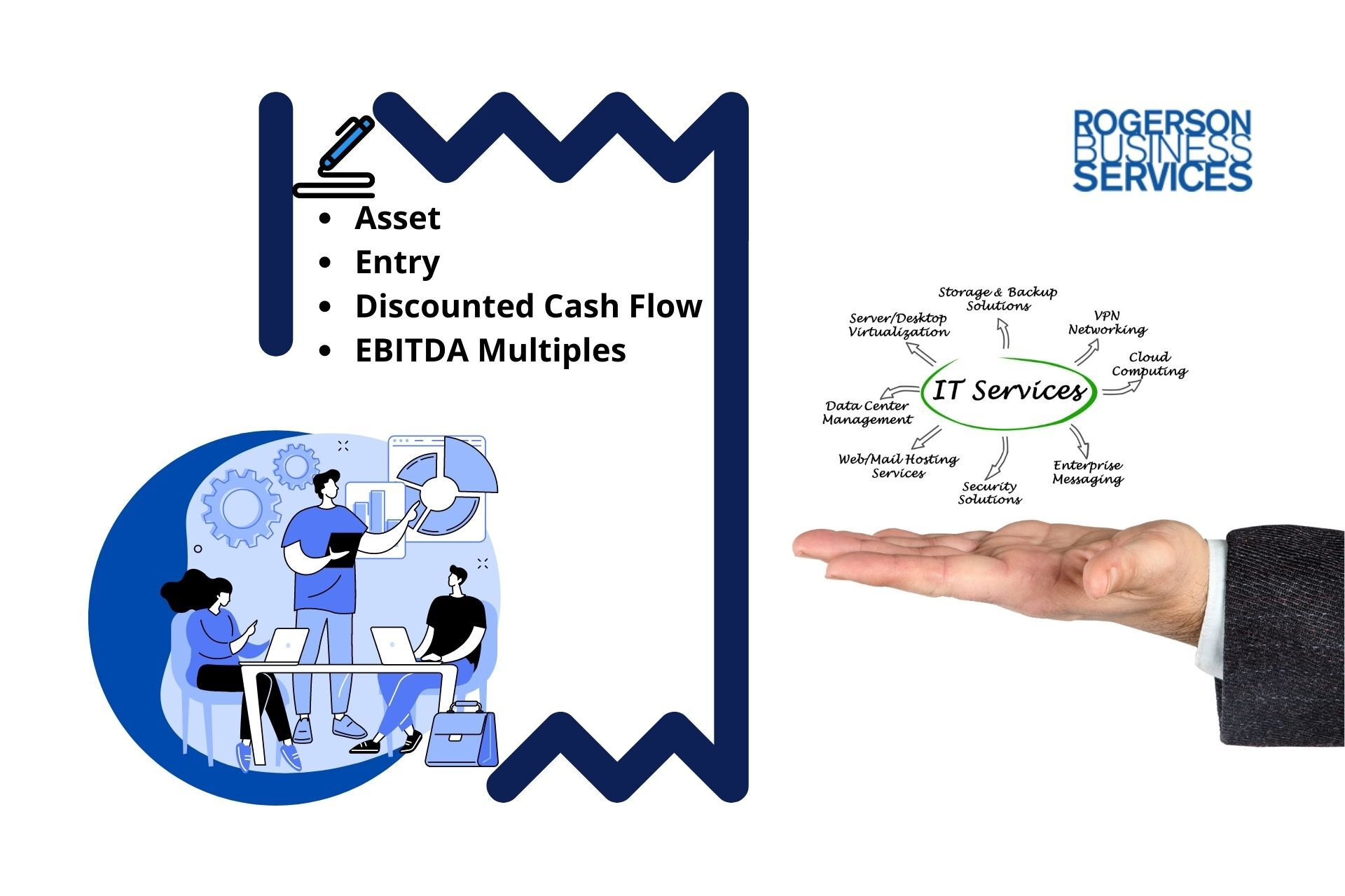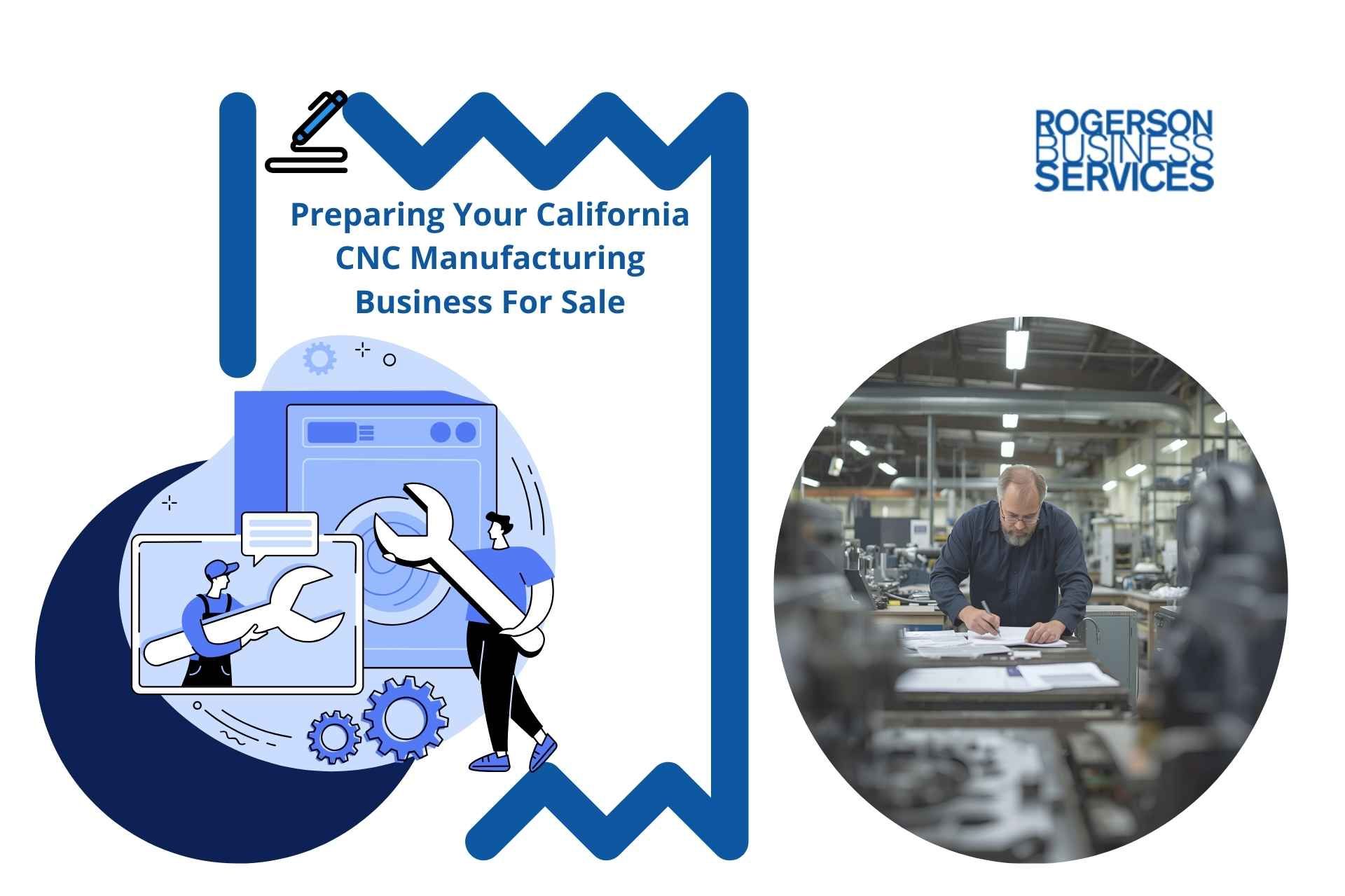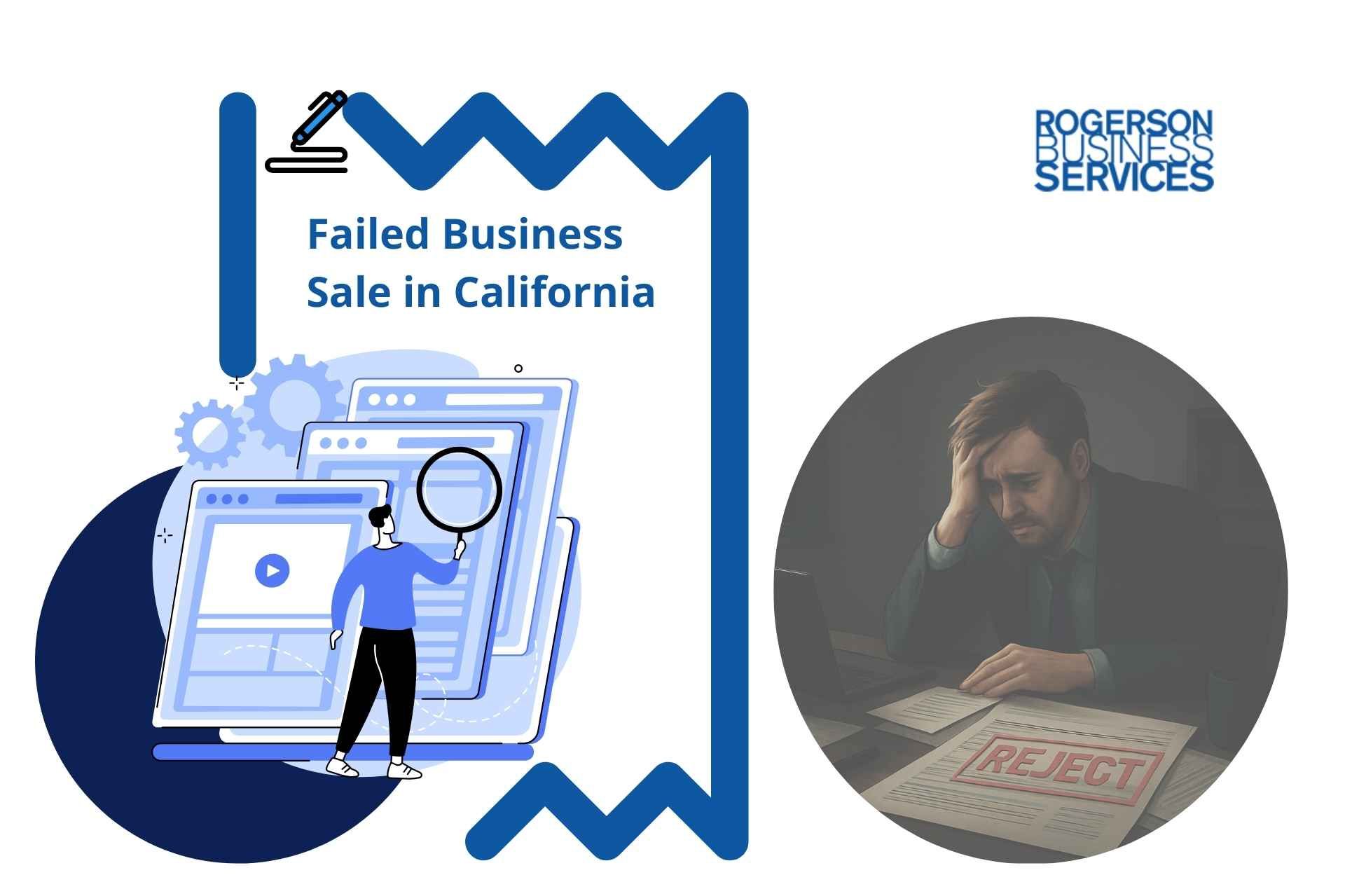IT MSP Valuations: How to Value Technology Companies
MSP Valuations
Here are four different valuation methods or approaches:
- Asset
- Entry
- Discounted Cash Flow
- EBITDA Multiples

MSP valuations are done when IT services business owners in the lower middle market sector want to know their company's worth. We dive into four business valuation methods used by experts!
If you operate an MSP IT company or IT managed services provider business, you've probably tried to find out how much your company is worth, especially if you're looking to sell, and learned that it's a surprisingly complex question.
This article will examine four business valuation approaches used by professional investment firms and valuation experts.
How to Value a Tech Company
Calculating the value of any company is an inexact science. Every investment firm has its own preferred set of valuation methods. Here are four of the most commonly used ones.
Asset Valuation For IT MSP Businesses
This method usually produces a lower number than other methods because it doesn't consider the potential for your future quality of earning report. It also is not very useful for IT firms, as they don't tend to have a lot of physical assets.
This simple method adds up the value of a company's assets, then subtracts its liabilities. Smith and Doe Inc has $5 million in assets and $3 million in liabilities. By this method, S&D Inc would have a value of $2 million.
See: Who Gets To Keep The Cash in The Bank, Buyer, or The Seller? I'm curios to know
Entry Valuation For IT Managed Service Providers
Entry valuation is a more complex method that determines a company's value based on how much it would cost to start a similar business from scratch. Let's take the example of Smith and Doe Inc again. Let's say it has 200 employees.
An investment firm could estimate the cost of hiring those employees at $1 million and a further $2 million to train them to the level they currently perform. The products and services S&D provides would cost $3 million to develop from scratch, and the assets and client base would cost a further $4 and $5 million to produce, respectively. Adding up all those numbers, S&D would be valued at $15 million using this method.
Discounted Cash Flow For MSP Valuations
This valuation method estimates a business' future cash flow to determine its market value. For a very simplified example, let's say that Smith and Doe Inc generated a profit of $5 million this year. However, recent market trends are such that their earnings next year are predicted to be $4.75 million. An investment firm using this method would extrapolate this trend over the next five years to get the numbers $4.75, $4.5, $4.25, $4, and $3.75 million.
Adding them all up would get a final value of $21.25 million. There is a live debate about how proper this method is for technology company valuation start-ups, with an article by McKinsey touting it as the most reliable method for valuation for tech companies.
In contrast, others say that the IT sector's income, expenditure, and growth are not stable enough for Discounted Cash Flow to be a useful predictive tool.
See: What's My Business Worth? Income Approach Valuation Formula
MSP Valuations & EBITDA Multiple
The EBITDA Multiples method ( also known as the Multiple of Profits method or the Price/Earnings Ratio) is a valuation method that applies a multiple to a company's EBITDA (short for Earnings Before Interest, Taxes, Depreciation, and Amortization).
For example, if an investment firm applies a multiple of 5 to Smith and Doe's EBITDA of $5 million, S&D would be valued at $25 million. The multiple applied to the EBITDA of a company can range from as low as 5 to as high as 20. The main factor determining the numerous used is how predictably the company generates significant revenue.
We at Rogerson Business Services, RBS Advisors, prefer to use EBITDA Multiples to evaluate lower middle market companies, and we believe this method to be the most reliable predictor of an IT firm's value.
Most IT services businesses make their money from monthly or annual recurring service contracts, making their revenue more predictable than businesses reliant on individual sales. IT firms also have a high barrier to entry, requiring a lot of highly specialized technical knowledge to be successful.
The IT sector has also been steadily growing for decades with no sign of slowing down!
See also SDE vs EBITDA Valuation - what is the best method to use for a service business?
IT Services Company Valuation Multiples
The EBITDA Multiples method is the preferred valuation method. Is there a way you could perform this valuation yourself?
There are many valuation experts and investors use the valuation multiples to value an IT MSP business.
Professional investors use a formula called the Income Approach Formula. The Income Approach Formula uses a firm's present value of cash flow to determine the multiple to apply to the EBITDA.
A simple version of this formula is to divide your company's stock price by the stock's earnings to get the numerous to apply to your EBITDA (this is called the P/E ratio). This ratio represents how much investors are willing to pay for a share of your company's earnings.
A P/E ratio of at least four is considered healthy for an IT managed services provider. A company is considered a scorching commodity if it has a P/E ratio of 8 or higher!
What Affects the Value of a Business?
Suppose you're considering selling your IT services business and want to raise your company's value.
You ask yourself, ‘What’s my business worth?’ In that case, higher profits will undoubtedly help, but there are a few other things you can do to increase your IT services company's value in the eyes of professional investors.
1. Position Your Company for Growth
This may sound counterintuitive to someone looking to find an exit strategy example, but a company that looks set for future success will attract more and higher bids. After all, you wouldn't want to buy a company you were sure would crash and burn a few years after you bought it!
2. Keep a Sharp Eye on Your Cash Flows
We've established above that estimates of future cash flow play a massive role in determining the value of a company. With that in mind, it's essential to have an effective system in place for collecting all the money you're owed, headed by a savvy controller or CFO.
It's also best practice to review your key performance indicators every month. Carefully monitoring your finances will minimize financial shocks, resulting in a more stable firm that will attract more buyers.
3. Build a Strong Customer Base
Every successful company needs customers to survive and thrive. Of course, any fourth-grader could tell you that the more customers you have, the better your business will be, but there's more to a solid customer base than simple numbers. Savvy M&A buyers are looking for a company that can keep customers coming back.
Sharp lower middle market business owners know who their ideal customers are, why they would prefer your product or service over those provided by your competitors, and how you intend to keep them coming back. When seeking to strengthen a customer base, two often overlooked factors affecting business profit are customer churn rate and customer concentration.
Customer churn refers to customers that buy from a business just once, then never again. Buyers get spooked when they see hundreds of people buying only one product from your company, then never returning. After all, how many people bought those sugar-free gummy bears before all those reviews came rolling in? Do you think that product increased Haribo's value or decreased it?
Customer concentration refers to what percentage of your sales come from what percentage of your customers. The "80-20 Rule" is a rule to keep in mind. When 80% of your business comes from 20% of your customers, you may have a problem with customer concentration. However, depending on who those customers are, which make up that 20%, and how uniquely positioned your firm is to satisfy your niche customer base, customer concentration may not be that bad.
All in all, a solid customer base is an understood customer base. If you can succinctly explain to a prospective buyer to whom you sell your products and services and what keeps your customers coming back, that buyer is far more likely to give you a fair offer.
4. Make Sure Your Business Supplies High-Quality Products and Services
Business 101: A business exists to fulfill the needs of its customers. Furthermore, the company that meets this need better than its competitors will outlast said, competitors. When looking for how to increase company valuation, it will be good to get back to basics and ask yourself, "What need does my product or service fulfill for my customers?".
Once you've figured that out, ask yourself the follow-up question, "Is there any way that I can make my product or service fulfill a more important need?". Companies that only sell discretionary, "nice, but not necessary" products tend to have low customer retention rates, and, as we've covered, buyers get spooked by low retention rates.
If you want to make your product or service indispensable, sit down with your executives and brainstorm ways your company can become essential to your customers. Hire an outside firm if you have trouble getting an objective view.
Perhaps you could modify an existing product or service to fulfill a more pressing need. If your competitors are making a killing, figure out ways to make your business stand out. Make sure the world knows that your product or service will fulfill the needs of your target market at the best value.
5. Work to Minimize Uncertainty in Your Company
A certain degree of uncertainty is a regular part of business, but too much tension is very unattractive to prospective buyers. In the period leading up to a sale, it is crucial to have a strong management team to smooth over uncertainties as best they can. A strong management team can also help you identify volatile points in your business, such as inconsistent MSP profit margins, a lax or toxic office culture, or misaligned goals and objectives.
IT Business Sales and IT Business Brokers
If you're looking to sell your IT MSP company. It would help if you considered hiring a mergers and acquisitions advisor to help you through the process. Here are five areas where an M&A advisor or IT business brokers can lend invaluable assistance while selling a business process.
1. Collect and Organize the Necessary Documents
Your M&A advisor will work with you and your CFO to analyze your firm's performance and gather the financial statements needed throughout the process. They will perform a business valuation using market-tested techniques to ensure you get the best value.
2. Locate Potential Buyers
Finding and interviewing potential buyers is perhaps the most tedious part of the process. Your lower middle market business broker will help you through the process every step. They will counsel you on what to look for in a buyer, set up interviews with potential buyers, write up confidentiality agreements, help you address your buyer's concerns, and keep you and your buyer up-to-date on all necessary information throughout the process.
3. Avoid Red Flags
There are certain red flags potential buyers look for when examining companies to purchase. Suppose you fail to disclose your reason for selling, withhold vital financial documents, don't agree to a trial period, or don't give them enough time to complete the due diligence process (more on that later). In that case, a buyer will likely back out of the deal. A good IT business broker or advisor will help you avoid these pitfalls.
4. Manage the Financial Due Diligence Checklist
Once the LOI, letter of intent, is signed, the due diligence process begins. This is the period where the buyer reviews the representations of the seller. During the due diligence process, your lower middle market business broker will review your leases, sales contracts, employment agreements, and other vital documents with you and the seller. See: Due Diligence Checklist
5. Negotiate the Definitive Purchase Agreement
Once the actual purchase offer arrives, your sell-side advisor will help you and your legal advisor write up a Definitive Purchase Agreement that represents the full legal wishes of both you and your buyer.
This agreement will be hammered out over many conversations and may touch on how shares, options, and other securities will be handled, "No Shop" clauses, and "Break-Up Fees." And Material Adverse Effect clauses. If any of those terms seem confusing, don't worry, your M&A advisor will help you navigate the negotiation.
MSP Valuations: Final Take
Putting a dollar amount on the information technology services company you've poured years of your life into can be a complex process. Fortunately, you don't have to do it alone. With a quality M&A advisor, sell-side advisor, or an IT business broker by your side, you can be sure to get the best value possible for your IT company!
Conclusion
Selling your IT managed services provider (MSP) business in the lower middle market in California is a life changing event that requires forethought and careful planning.
Before selling your business, know its worth in both tangible and intangible assets. Find a reliable professional representative like a certified business intermediary specialized in M&A deals to manage the process while you continue to maintain your business.
The IT broker will do the heavy lifting by marketing to and negotiate with vetted buyers and close for a reasonable price.
See how Rogerson Business Services sold businesses in California by Visiting These Case Studies.
If you have decided to value and then sell your IT services business now or within the next six months, click here to get started with this quick and simple form, so we can understand your pain points better and prioritize your inquiry with RBS Advisors.
Go to the next article: Part of tips to selling an Information Technology Services Company in California series ->
Download Free Guide To Help Sell Your IT Services Company
Hey there! Can we send you a gift?
We just wanted to say hi and thanks for stopping by our little corner of the web. :) we'd love to offer you a cup of coffee/tea, but, alas, this is the Internet.
However, we think you'll love our email newsletter about building value and properly position your company before transition/exit your business ownership.
As a special welcome gift for subscribing, you'll also get our helping and educational guides, tips, tutorials, etc.. for free.
It's filled with the best practices for retiring serial business owners like Dan Gilbert, Larry Ellison, Warren Buffett, and many more.
Just sign up for our emails below.


